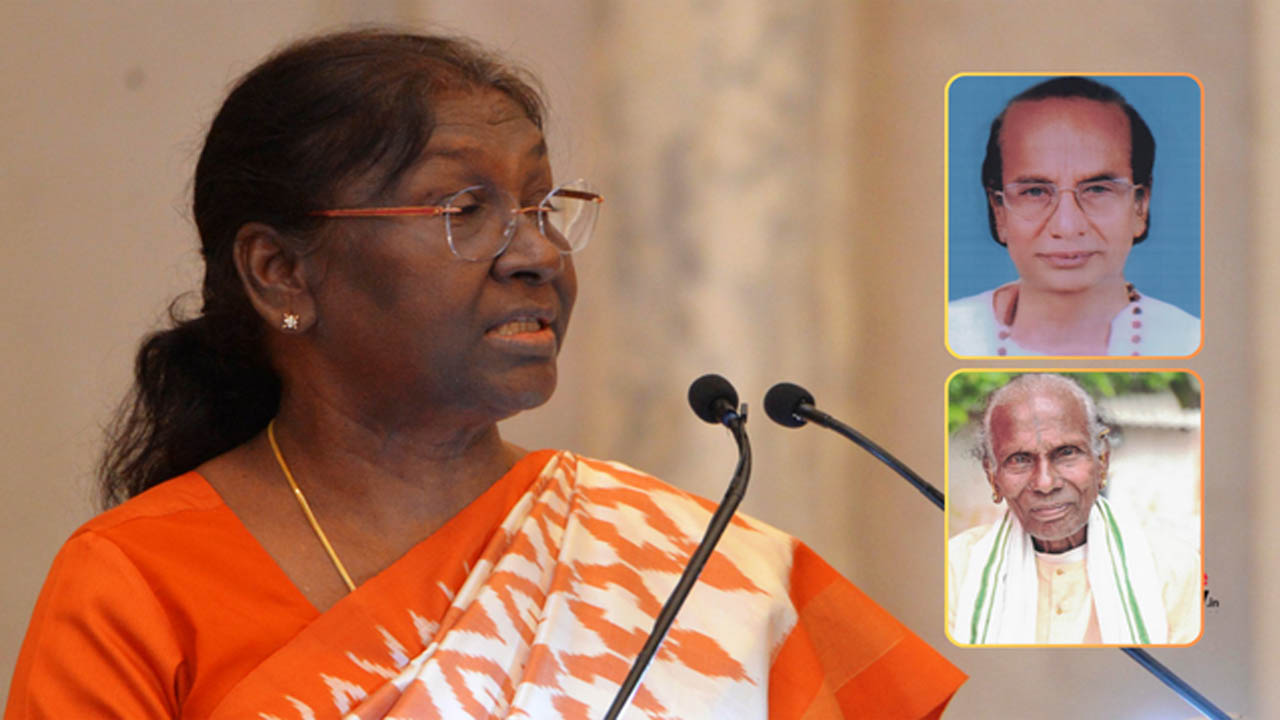In a momentous ceremony held at Rashtrapati Bhavan in New Delhi, President Droupadi Murmu adorned two distinguished personalities from Odisha, Binod Kumar Pasayat and Guru Gopinath Swain, with the esteemed Padma Shri award for their exemplary contributions to the field of art. The event, graced by eminent dignitaries including the Vice-President, Prime Minister, Union Minister for Home Affairs, witnessed the recognition of 3 Padma Vibhushan, 4 Padma Bhushan, and 47 Padma Shri awardees for the year 2023.
Binod Kumar Pasayat: A Literary Maestro of Sambalpuri Heritage
Binod Kumar Pasayat, a luminary in the realm of Sambalpuri literature, received the Padma Shri for his profound impact on Koshali literature. Despite his humble beginnings as a barber, Pasayat’s literary journey burgeoned in Sambalpur, culminating in the creation of timeless classics such as the renowned Sambalpuri play, “Mui Nai Mare” (I will never die). His repertoire boasts numerous hits, including songs featured in acclaimed Odia films like “Samarpan,” “Adivasi,” and “Para Stri.”
Born on December 3, 1935, Pasayat’s literary odyssey commenced at a tender age when he immersed himself in the world of drama. Despite achieving widespread acclaim and earning prestigious accolades such as the Sarala Puraskar and Odisha Sahitya Academy Puraskar, Pasayat remained tethered to his roots as a barber, honoring the legacy of his forefathers.
His contribution to Sambalpuri/Koshali literature is immeasurable, characterized by his simplicity and the profound resonance of his poems and writings. Pasayat’s popularity extends far beyond Western Odisha, resonating deeply with audiences across the region through his soul-stirring Sambalpuri folk songs.
Guru Gopinath Swain: A Guardian of Tradition and Culture
Guru Gopinath Swain, an emblem of tradition and heritage, was honored for his lifelong dedication to preserving and propagating the age-old tradition of Krishna Leela singing. Hailing from a lineage of Krishna Leela performers, Swain’s commitment to traditional techniques and innovation has bridged the gap between antiquity and modernity. His mastery over ancient ragas and meticulous training methodologies have nurtured a legacy of disciples across generations.
Born on February 15, 1918, Guru Gopinath Swain embarked on his tryst with Krishna Leela at the age of 10 under the tutelage of his father’s elder brother. His dedication to preserving ancient ragas and intricate improvisation techniques has not only safeguarded a cultural heritage but also inspired a legion of followers who continue to uphold this rich tradition.
In his illustrious career as a Guru, Swain observed rare old ragas and songs of the tradition gradually fading away. This realization led him to devote himself to collecting and learning endangered parts of the repertoire from the senior most gurus of the form alive in the 1940s-50s. He gradually mastered the entire repertoire, maintaining a powerful voice that can move across octaves effortlessly even at the ripe age of 106.
Legacy and Recognition
Despite their advanced years, both Pasayat and Swain continue to be beacons of inspiration, garnering accolades such as the Odisha Sangeet Natak Akademi award and the prestigious Padma Shri. Their unwavering commitment to their craft and relentless pursuit of excellence serve as a testament to the enduring power of art in enriching lives and preserving cultural legacies.
Their legacy extends beyond mere recognition; it encompasses the indelible mark they have left on the cultural landscape of Odisha and India at large. As custodians of culture and embodiments of excellence, they epitomize the timeless spirit of creativity and heritage that continues to enrich the tapestry of Indian society.
The conferment of the Padma Shri upon Binod Kumar Pasayat and Guru Gopinath Swain underscores the significance of their contributions to literature and traditional art forms, not just in Odisha but on a national scale. Their journey, marked by dedication, resilience, and an unwavering commitment to their craft, serves as an inspiration for generations to come. As custodians of cultural heritage, they stand as pillars of strength, ensuring that the rich tapestry of Indian art and tradition thrives and flourishes for posterity.
(With inputs from agencies)








